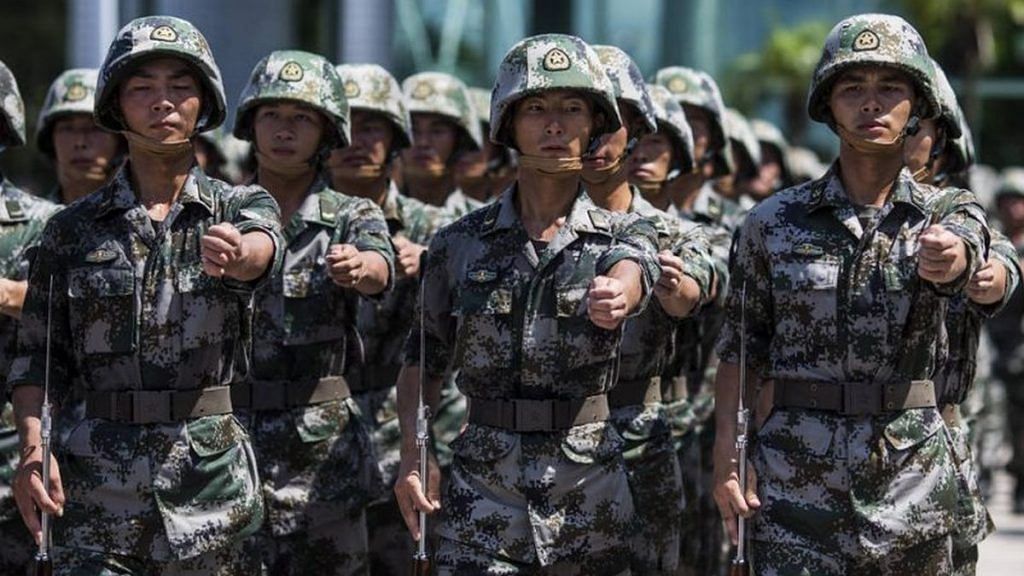New Delhi: China is continuing with the construction of roads, bridges, helipads and military camps near the Line of Actual Control (LAC), on its side of the border, ThePrint has learnt.
According to sources in the defence and security establishment privy to fresh satellite images from the border area, the new constructions are meant to provide back-up for the thousands of troops China has moved forward near Ladakh, and also into the Indian side, since May this year.
The Chinese road construction activity on their side of the Galwan Valley, and deeper into their territory, is continuing even though they pulled back from Indian territory, the sources said. This, they added, was an indication that the Chinese are looking to stay dug in and built up in the area through the upcoming winter season.
“The Chinese construction activity shows that they are getting ready for the winter and are preparing for any possible action from the Indian side. It also shows that they are pushing their new claims strongly,” a source said.
The source added that the Chinese are building bridges, camps and roads. Asked where all, the source mentioned Galwan Valley, and Lanak La in occupied Aksai Chin, without getting into details.
Indian security agencies have noted that the Chinese are upgrading a road between Lanak La and Krgymo Traggar, a distance of about 40 km.
Krgymo Traggar is about 16 km east of Gogra where the Chinese continue to maintain a presence even though both sides had agreed to disengage.
China’s withdrawal in July from near the Y Junction in the Galwan Valley, which is on the Indian side, is seen more as a fallout of the Galwan river’s rising water level, which made their stay untenable, rather than any sincere effort to disengage, sources said.
Also Read: ‘Multiple’ India-China clashes occurred along LAC in May and June, some lasted all night
Entire Indian military on alert
Last month, satellite images had tipped India off about a large concentration of troops in the Tibet Autonomous Region and the possible use of tunnels to amass equipment.
A Twitter user known for satellite imagery expertise — @detresfa — along with Sim Tack, an analyst with the geopolitical intelligence platform Stratfor, tweeted fresh images Friday showing increased deployment of the People’s Liberation Army (PLA) in Gar County, about 180 km south of Pangong Tso.
The serene Ladakh lake is one of the stand-off sites in the current spate of India-China tensions.
Part of the ongoing #IndiaChinaFaceOff mapping effort with @SimTack, GEOINT research of Gar County, Tibet, south of #Pangongtso reveals the full extent of #China's troop deployments to the AOR, suspected to either resupply or respond to potential issues arising from the dispute. pic.twitter.com/64c5aWd49n
— d-atis☠️ (@detresfa_) August 21, 2020
The Twitter handle had, this week, also posted satellite images showing the Chinese constructing a surface-to-air missile site as well as other infrastructure on the banks of the Mansarovar Lake in the India-Nepal-China tri-junction area near the Lipulekh pass.
Since May, the Chinese have moved thousands of troops to the LAC, backed by hundreds of artillery guns, tanks and other mechanised columns, besides missile systems.
The Chinese are also suspected to have activated their S400 Triumf air defence system.
India, on its part, has put the entire military on operational alert. Besides deploying over 30,000 additional troops in Ladakh, backed by more tanks, artillery and air power, the majority of the ships under the Eastern and Western Naval Commands have been deployed, including submarines.
This report has been updated to replace the word “building” with “upgrading” in one instance
Also Read: This is how China deployed psy-war after Ladakh. And why India isn’t replying
